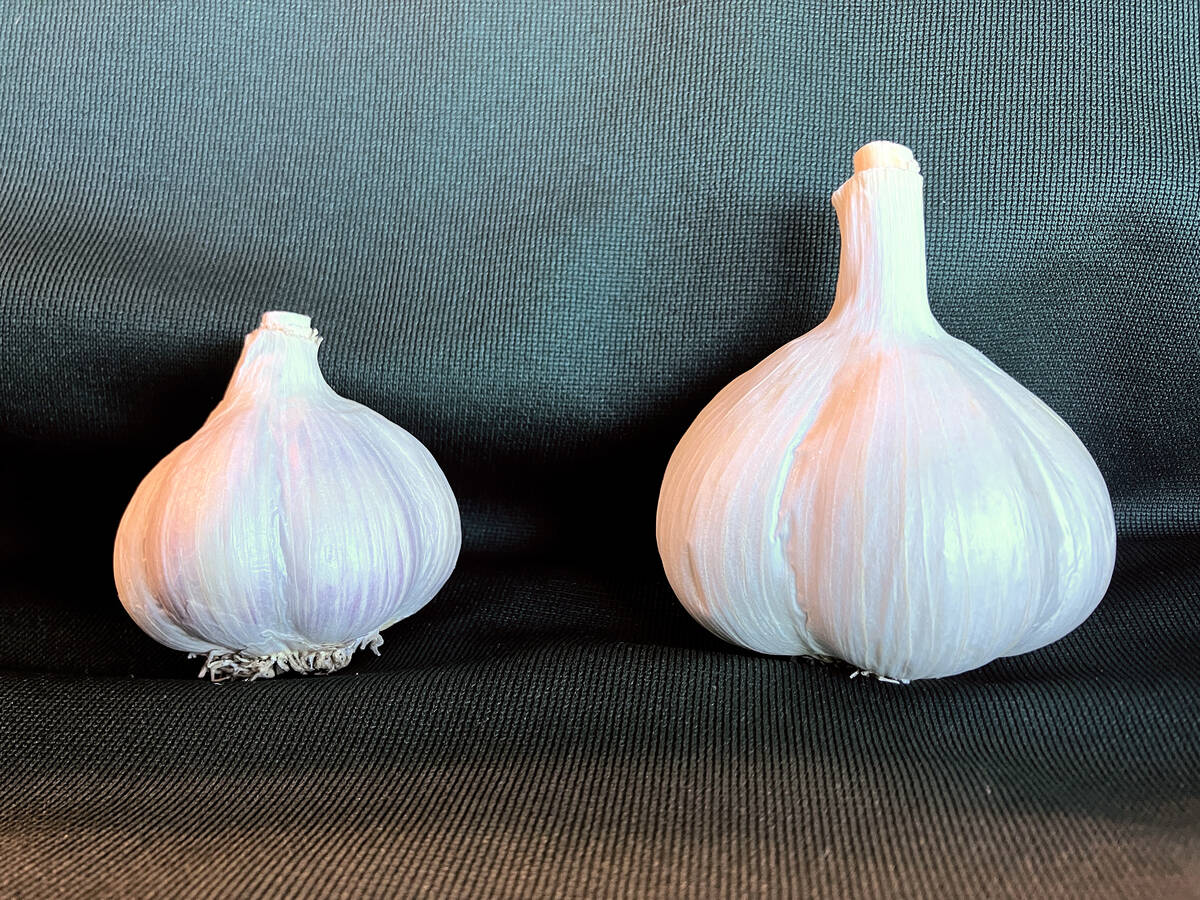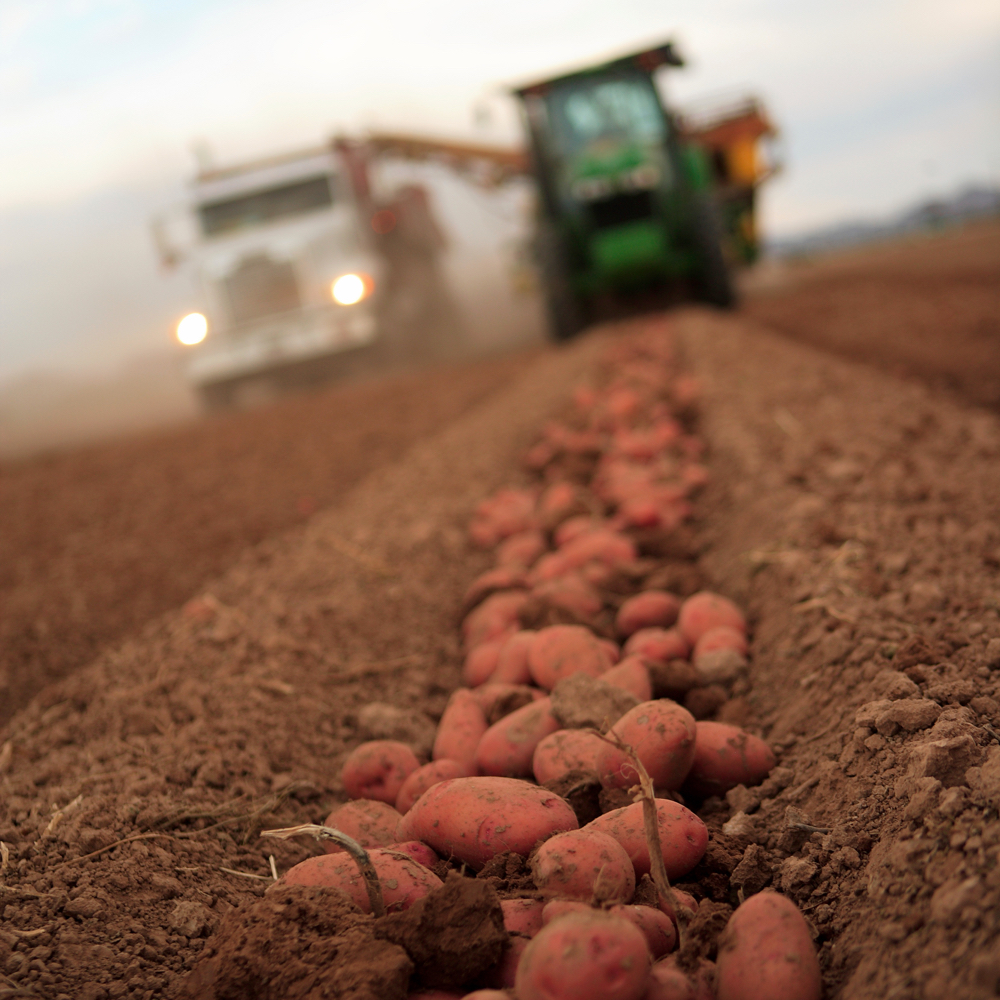When the 2020 re-evaluation of herbicide Linuron dropped the application rate for potatoes, growers thought they would be off the hook until 2023, when the new rate comes into effect.
However, the registrant ran into regulatory issues after sourcing a technical active ingredient from a new provider. That pushed back production, causing supply issues.
“It will definitely be less than normal,” said Dennis Van Dyk, vegetable crop specialist with Ontario’s Ministry of Agriculture, Food and Rural Affairs.
Read Also

Clean seed garlic promises bigger bulbs and higher returns for growers
Ontario garlic trials show clean seed outshines conventional yields, with stronger drought resilience, reduced virus risk and greater economic outcomes.
Why it matters: Getting the needed supply of Linuron will be difficult this year, but other options are available for weed control in the right combination.
The amount available is still to be determined, but Van Dyk anticipates some growers won’t receive the Linuron needed or expected this year. However, he said potatoes are in a better spot than other vegetables in terms of losing Lorox, the brand name of Linuron.
“Linuron is a key piece. It is a great product and it covers a good spectrum of weeds but there are some opportunities to use other products and cover the spectrum you’re losing.”
Without Linuron, Van Dyk said Zidua and Sencor STZ could slot into existing programs, especially if the grower wants a straight swap to cover a similar spectrum of weeds and doesn’t want to change application timing or incorporate tillage.
“What are we commonly looking at in Ontario in terms of a program?” said Van Dyk. “A heavy use of Sencor with Dual (II Magnum), heavy use of Boundary (LQD) topped up with Sencor, and mixing in Lorox with one, two, three of these products.”
The big question is how Zidua, a new group 15 registration, and Sencor STZ, a group 5/14 product, measure up against Lorox for coverage and efficacy.
Zidua is effective on grass and small-seeded broadleafs like pigweed. North Dakota and Iowa efficacy, tolerance, data, rates and combination research show it has good crop safety at a high rate, said Van Dyk. However, the research was predominately on russet varieties with limited information on Ontario’s fresh and processing varieties.
“In general, with the high rates and combinations of crops, it looks pretty good on potatoes,” he said.
Sencor STZ has a similar coverage spectrum as Lorox, effective on grasses and a wide range of broadleafs, but had mixed results when it first came to market, said Van Dyk.
“You need moisture to activate those pre-emerge products,” he said. “I think because of the dry spring, there were some mixed results in terms of efficacy and maybe lead to injury that may not have excited growers as much as it could have.”
Van Dyk said group 15s do the heavy lifting for most grasses, lamb’s quarters, nightshade, pigweed and waterhemp, but Lorox was a powerhouse with fleabane.
It also topped up Dual on ragweed, lady’s thumb, wild mustard, wild buckwheat, and to some extent, velvetleaf.
Dual matched with Zidua covers the grasses, marsh grass, groundsel, purslane and tops up ragweed, pigweed and lamb’s quarters.
Sencor STZ with Dual covers grasses and tops up broadleaf, waterhemp, pigweed and nightshade but dominates groundsel, purslane, mustards, lady’s thumb and ragweed.
“If you go back and compare what you’re losing with Lorox to what you’re picking up with Suncor STZ, it’s a fairly similar spectrum,” said Van Dyk.
Suncor plus Suncor STZ will double up but with the addition of sulfentrazone will cover purslane, waterhemp, ragweed, pigweed, nightshade and mustards.
“Ninety to 100 per cent would be ideal, but anything over 80 is pretty good control,” said Van Dyk. “If you’re in around 50 per cent, it’s just all right. Anything below that, it’s not picking up anything.”
Outside of the basic programs, most acreages use a Suncor plus Dual or Boundary with Suncor plus Lorox. Though this provides good coverage, common ragweed, purslane, perennial sow thistle, buckwheat and mustard are missed without Lorox.
“There are some products that we might be able to mix and match if you’re just doing one pass or one application pre-emerge if that’s your weed control,” he said.
“If you’re looking to do some different timings in terms of applying Dual early and keeping the Suncor until early post and then following up with some foliar applications, there’s opportunity there as well by staggering the applications.”
Eptam, a group 15, could be a little more work due to its volatility. It reacts with moisture to create a vapour that kills weed seeds but is ineffective on germinated or established plants.
“You need to make sure the power hill or whatever you’re using to make your beds is following the sprayer to make sure it gets incorporated,” said Van Dyk. “It does have some pretty good weed control, good on grasses, great on nightshade. Doesn’t do much on mustards.”
Reflex, a group 14, is effective on pigweed, suppresses lamb’s quarters but is weak on grasses and has rotational crop restrictions. Field crops can follow but vegetable crops are generally not recommended.
“If you have a good pre going on, maybe you’re going to stretch the Suncor and apply early post or post-application,” he said. “You can also mix and match with Prism (SG) as well.”
Prism SG, a group two, is effective on grass, pigweed, mustards and nightshades and must be applied early-post before flowering because it can have phytotoxicity effects.
“If you’re going to go with your regular pre-program without Lorox, you may be surprised at some of the species that Lorox was picking up that you may not have appreciated.”
Van Dyk said tillage is an option for potatoes, especially now that growers are moving toward one pass, particularly in planting operations, to diminish movement and equipment on the field. There aren’t many weeds resistant to steel.
“You may want to incorporate rehilling into the program and then reapplying the Suncor again to get some of those pre-emerg activities a little later,” Van Dyk said.
With no new products in the pipeline and fewer options due to re-evaluation, resistance or supply issues, producers need to be nimble.
“You may have to change up your practice a little bit to use some of these other products in a different way than in the past,” he said. “We’re going to have to mix and match the products that we currently have and make those work.”















